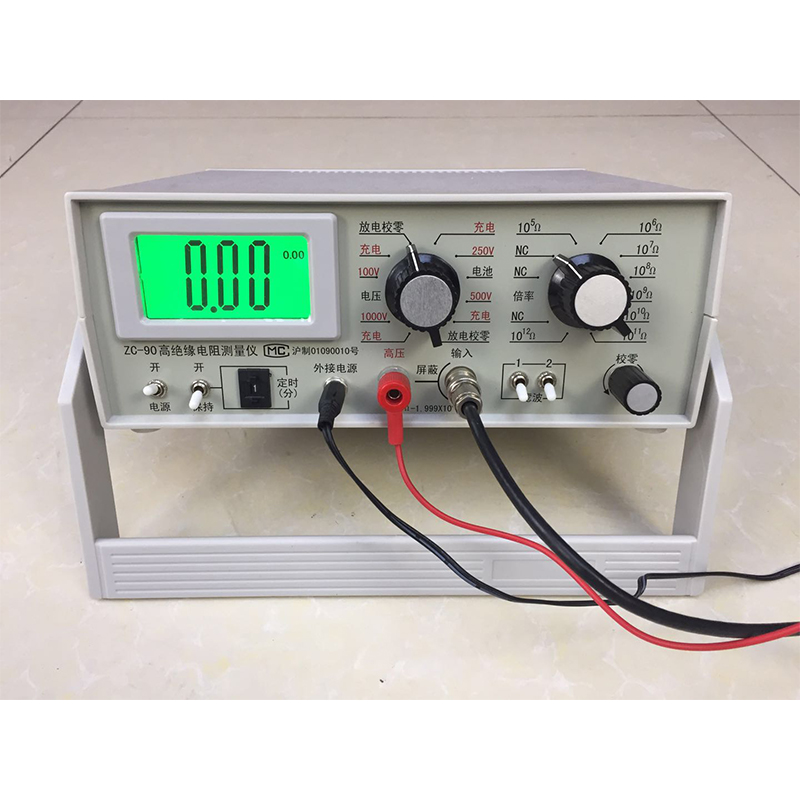Understanding Insulation Resistance Testing for Electrical Safety and Equipment Performance
Understanding Insulation Resistance Tests Importance and Methodologies
Insulation resistance tests are a crucial component in the maintenance and safety monitoring of electrical systems. These tests help ensure that electrical equipment is functioning safely and efficiently by determining the insulation integrity of electrical circuits and wiring. Poor insulation can lead to hazardous conditions, such as electrical shocks, equipment failures, and even fires. Therefore, understanding insulation resistance tests is vital for engineers, technicians, and anyone involved in electrical maintenance.
What is Insulation Resistance?
Insulation resistance refers to the resistance offered by the insulating material between conductive parts of electrical equipment and ground. It is a critical factor that dictates the reliable operation of electrical systems. A high insulation resistance indicates that the insulating material is effective in preventing electrical leakage, while a low resistance signals that the insulation is deteriorating or compromised.
Importance of Insulation Resistance Testing
1. Safety The primary purpose of insulation resistance testing is to ensure the safety of personnel working with electrical systems. Low insulation resistance can result in electric shocks, which can be dangerous or even fatal.
2. Equipment Protection By identifying insulation issues early, insulation resistance tests can help prevent equipment damage. Moisture ingress, physical abrasion, and thermal stress can all lead to faults, and addressing these issues before they become significant problems can extend the lifespan of the equipment.
3. Compliance with Standards Many industries are governed by strict electrical safety standards. Regular insulation resistance testing is often mandated by safety codes and regulations to ensure compliance and reduce liability.
4. Preventive Maintenance Conducting regular insulation resistance tests allows for proactive maintenance, rather than reactive repairs. This practice can lead to reduced downtime and lower maintenance costs.
Methodologies of Insulation Resistance Testing
Insulation resistance testing typically involves the use of a megohmmeter, which is a specialized device that applies a high voltage (usually 250V, 500V, or 1000V) to the insulation and measures the resistance
. Here’s a step-by-step overview of the testing processinsulation resistance tests

1. Preparation Before conducting the test, ensure the equipment is de-energized and properly isolated. Disconnect any sensitive components or devices that could be affected by the high voltage.
2. Connecting the Megohmmeter Attach the megohmmeter leads to the insulation to be tested. One lead connects to the conductor, while the other connects to the equipment ground or the casing.
3. Performing the Test Activate the megohmmeter, applying the specified test voltage for the required duration (often 1 minute). This allows the instrument to measure the insulation resistance accurately.
4. Recording Results Once the test is complete, record the resistance value. The resistance should typically be in the megohms range; values lower than expected indicate potential insulation problems.
5. Analyzing Data Compare the results with baseline readings from previous tests or manufacturer recommendations. A significant drop in resistance can indicate degradation of the insulation, and corrective action should be taken.
Interpreting Results
Interpreting insulation resistance test results is critical for appropriate actions to be taken. Generally, a resistance value of 1 megohm per 1000 volts of operating voltage is considered acceptable for most installations. However, different systems and applications may have specific standards that need to be considered.
Low resistance values should be treated seriously. It's advisable to investigate further, looking for moisture ingress, physical damage, or material degradation. Trends over time are also important; consistent monitoring can reveal slow deterioration that might not be apparent through sporadic testing.
Conclusion
Insulation resistance tests play a vital role in maintaining electrical safety and performance. By regularly conducting these tests, organizations can ensure the integrity of their electrical systems, protect their equipment, and safeguard their personnel. Emphasizing preventive measures and adhering to safety standards can significantly reduce the risks associated with electrical installations. As technology continues to advance, the methodologies and equipment used for insulation resistance testing will also evolve, enhancing safety and efficiency in the industrial landscape.
-
Why the Conductor Resistance Constant Temperature Measurement Machine Redefines Precision
NewsJun.20,2025
-
Reliable Testing Starts Here: Why the High Insulation Resistance Measuring Instrument Is a Must-Have
NewsJun.20,2025
-
Flexible Cable Flexing Test Equipment: The Precision Standard for Cable Durability and Performance Testing
NewsJun.20,2025
-
Digital Measurement Projector: Precision Visualization for Modern Manufacturing
NewsJun.20,2025
-
Computer Control Electronic Tensile Tester: Precision and Power for the Modern Metal Industry
NewsJun.20,2025
-
Cable Spark Tester: Your Ultimate Insulation Assurance for Wire and Cable Testing
NewsJun.20,2025
 Copyright © 2025 Hebei Fangyuan Instrument & Equipment Co.,Ltd. All Rights Reserved. Sitemap | Privacy Policy
Copyright © 2025 Hebei Fangyuan Instrument & Equipment Co.,Ltd. All Rights Reserved. Sitemap | Privacy Policy
